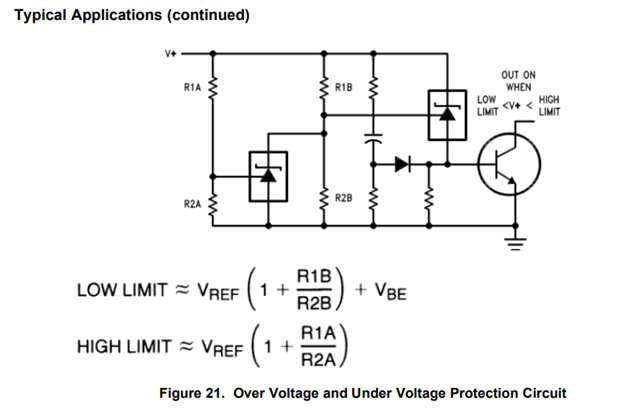Other Parts Discussed in Thread: TPS3762, , TLA431, TL431
Tool/software:

I am trying to build the following circuit but I am confused on how it works, and how the unlabeled passive components are sized. If I understand correctly, when V+ is between the low and high limit, the gate voltage will be almost 0 and the NPN will be an open circuit, but while while V+ is outside that range, the NPN will be turned on and have the connection grounded. So for the unlabeled parts, will any value work for the resistors, the capacitor, and the diode? Or is there a way to size them.
Thank you
Ryan

